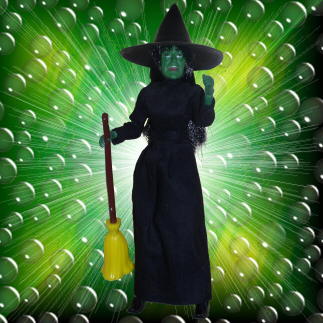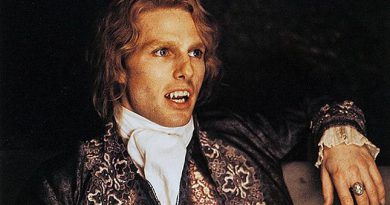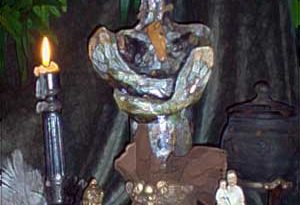Unexplained Mysteries of Witches
Weve all heard of the witch, but do witches have a real existence? Yes, they have existed since the dawn of history, and most likely for millenia before. In the Bible, Saul, afraid of the might of the Philistine army, took himself off to be counsellefd by the Witch of Endor.
In Classical literature we have Homers Circe who bewitched men and turned them into swine. Ovid tells us of the Strigae; erotic beings who flew through the air to carry out their murderous deeds. But with such an ancient history, when did the witch first appear?
EARLY MYTHOLOGIES
In Norse mythology we have the Valkyrie; maidens of Odin who flew through the sky and assisted in the outcome of battles, taking slain warriors to Valhalla.
Many theorists believe that witchcraft is a a survival of the cult of Diana, goddess of hunting. English archaeologist Margaret Murray put forward a similar theory in 1921, arguing that the craft traces its roots back to pagan fertility cults.
The Christian image of the Devil is actually an amalgam of god-forms from paganism, such as
the Greek Pan and the pagan horned god, sometimes known as Herne the Hunter. The idea no doubt traces itself back to the shaman, usually male, who would dress in the skin of the animal about to be slain; hence the horned god image.
THE OLD RELIGION
As hunter/gatherer society gave way to agriculture the pagan Old Religion changed in kind, moving more towards fertility, the witch coming into her own, using powers to guarantee a good harvest – or at least, that is what the people believed.
Advancing the agricultural society, man moved towards the city-state and political hierarchies. Here we can see the Old Religion changing again, the pagan gods and goddesses becoming more state oriented; hence the idea of Diana being closely associated with early pagan cults.
Murrays theory is most likely essentially correct. However, she thought that the survival of the pagan fertility religions constituted a well organised religious system. Whilst I would agree that witchcraft can trace its roots to such pagan cults, evidence suggests that there is no organised religious structure behind its practice.
Rather, it appears an autonomous spirituality, surviving throughout history purely because of the inate powers of mind and instinct we often call the paranormal. For instance, in times past Uri Geller would have been thought of as a witch, but few would suggest that he is part of a well organised and omnipotent movement.
THE CATHARS
Many historians have tried to link witchcraft with various heretical movements of the Middle Ages. Typical were the Cathars, who are believed to have originated in Armenia. They
moved to Bulgaria and western Europe, forming themselves into an integrated society in the south of France where they were known as the Albigenses.
Gaining significant local power, they became a political threat to mainstream Christianity. Hence, they were declared heretics and wiped out by the Inquisition, beginning with a Crusade against them in 1208, where thousands were put to death, branded as Devil worshippers.
KNIGHTS TEMPLAR
The Knights Templar came in for similar treatment. Formed in 1118 at the time of the First Crusade to the Holy Land, they were an elite military force of monks charged with guaranteeing safe passage for Christians to the area.
Growing in power, by 1300 they had 15,000 members and owned some 9,000 castles and manors. Clearly they were becoming too powerful for the Christian hierarchy. In 1303 they took refuge in Cyprus and other areas of Europe, including France.
Realising their chance, the Christian hierarchy turned on the Templars, accusing them of Devil worship. Slowly they were wiped out, some burned at the stake.
PERSECUTED MINORITIES
The suppression of the Cathars ansd Templars clearly show uncanny resemblance to the later witchhunts. Further, elements of their worship suggested supernatural obediance different
to orthodox Christianity, most likely based upon the heresy of the Gnostics who were suppressed in the 2nd century AD.
But whilst their form of worship was different, based more on mysticism than mainstream Christianity, they were nevertheless Christian based. As such, they could not have been allied with a pre-Christian fertility religion.
This is a valid point that many commentators miss. Cathars, Templars and witches were all persecuted in the Middle Ages, leading us to seek similarities between them. In actual fact, the only similarity was that, being mystical, all three were perceived as a threat to the authority of the Medieval Church.
Because they appeared a threat, all three were automatically branded as Devil worshippers, meaning worshippers of some supernatural fallen angel. Yet, in reality, the only Devil
they worshipped was a system different to orthodox Christianity.
THE WITCH IN THE MIRROR
This point must be made equally today, in a world where the media mixes witchcraft with Satanism, where in fact they are entirely different. Satanism is a perversion of Christian ritual, whereas witchcraft is a veneration of the powers and influences of nature, totally removed from any form of Christian influence.
Hence, it becomes almost impossible to identify the dawn of the witch. Rather than any form of organised religion, witchcraft can better be seen as a mixture of supposed paranormal powers and experiences.
As people have always experienced such things, then we can say that the dawn of the witch most likely came at the same time as the dawn of the human being. And in this sense, we are all witches, if not by name.



